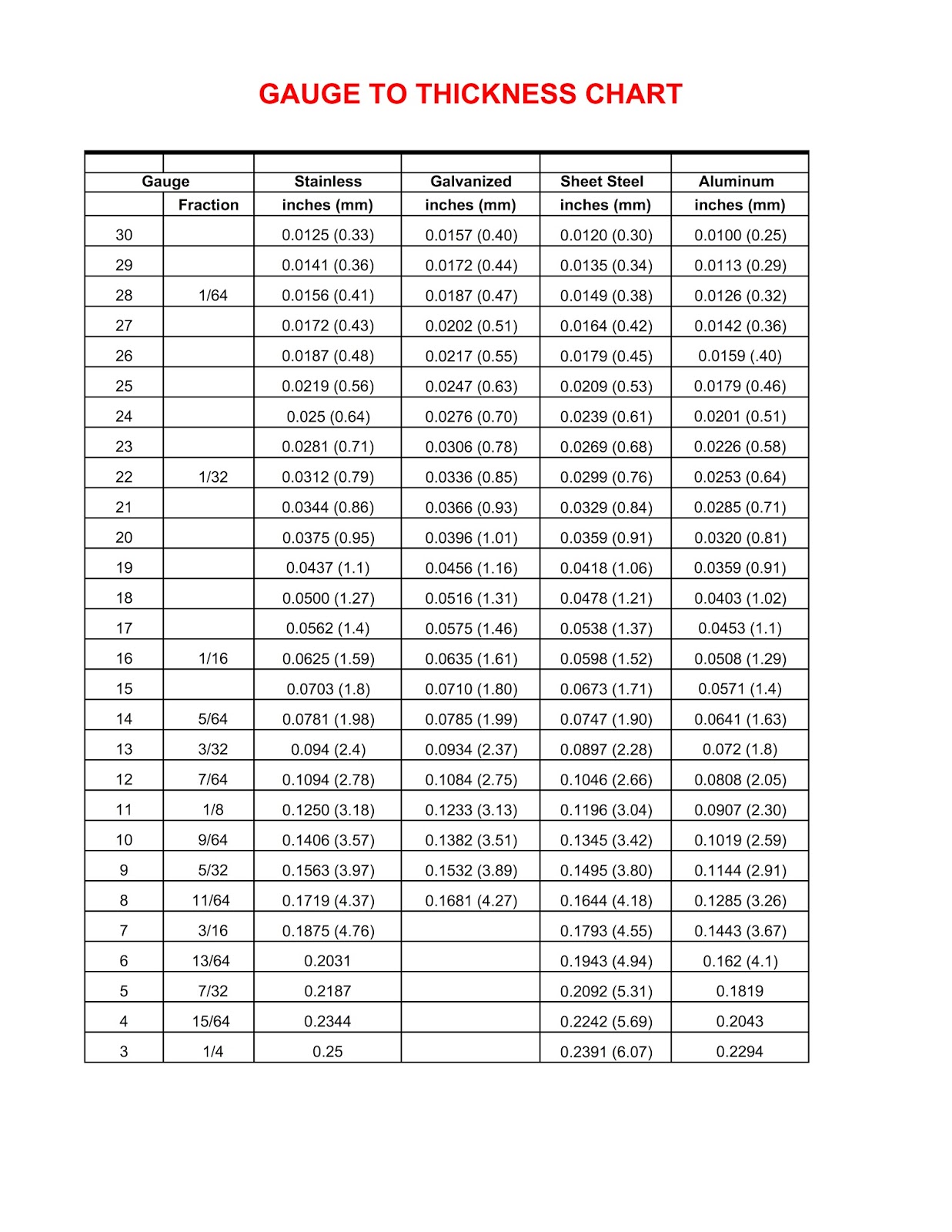

Understanding 14 Gauge Thickness To Inches: A Comprehensive Guide
When it comes to metalworking and manufacturing, understanding the thickness of materials is crucial for achieving the desired results in any project. One common thickness measurement that often comes up in discussions is the 14 gauge thickness to inches conversion. This article delves deep into the specifics of 14 gauge thickness, providing you with the knowledge you need to make informed decisions in your projects.
In this guide, we will explore not only the conversion of 14 gauge to inches but also its applications, advantages, and other relevant details that are essential for professionals and hobbyists alike. Whether you are a seasoned metalworker or just starting, this article aims to equip you with expert insights to enhance your understanding of gauge thickness.
The 14 gauge thickness is a standard measurement that is often used in various industries, including construction, automotive, and manufacturing. By the end of this article, you will have a clear understanding of how to convert 14 gauge thickness to inches, its significance, and how it applies in real-world scenarios.
Table of Contents
- What is Gauge Thickness?
- What is 14 Gauge Thickness?
- Conversion of 14 Gauge to Inches
- Applications of 14 Gauge Metal
- Advantages of Using 14 Gauge Metal
- How to Measure Gauge Thickness
- Common Materials in 14 Gauge
- Conclusion
What is Gauge Thickness?
Gauge thickness refers to a standard measurement system used primarily in the United States to specify the thickness of various materials, particularly metals. Unlike the metric system, which uses millimeters and centimeters, gauge thickness employs a numerical scale. The lower the gauge number, the thicker the material; conversely, a higher gauge number indicates a thinner material.
For instance, a 14 gauge material is thicker than a 16 gauge material. This system can be confusing at times, as the correlation between gauge numbers and actual thickness in inches or millimeters varies based on the type of material being measured.
What is 14 Gauge Thickness?
14 gauge thickness is commonly used in a variety of applications, ranging from construction to automotive and manufacturing industries. The actual thickness of 14 gauge metal typically measures approximately 0.0781 inches or 1.984 mm. This measurement can vary slightly depending on the specific type of metal, such as steel, aluminum, or copper.
14 Gauge Thickness Table
| Gauge | Inches | Millimeters |
|---|---|---|
| 14 | 0.0781 | 1.984 |
Conversion of 14 Gauge to Inches
To convert 14 gauge thickness to inches, one can refer to the standard gauge thickness table. As mentioned earlier, 14 gauge is equivalent to 0.0781 inches. This conversion is crucial for professionals who require precise measurements in their projects. Here is a quick reference for converting gauge to inches:
- 14 gauge = 0.0781 inches
- 16 gauge = 0.0625 inches
- 12 gauge = 0.1046 inches
Understanding these conversions is vital for ensuring that the materials used meet the necessary specifications for strength and durability in various applications.
Applications of 14 Gauge Metal
14 gauge metal is versatile and finds use in numerous applications. Here are some common uses:
- Construction: 14 gauge steel is often used in framing, roofing, and siding due to its strength and durability.
- Automotive: Many automotive parts, including brackets and structural components, utilize 14 gauge metal.
- Manufacturing: This thickness is popular in the manufacturing of appliances and machinery due to its malleability and strength.
- HVAC: Ductwork is often constructed from 14 gauge metal for its robustness and ability to withstand pressure.
Advantages of Using 14 Gauge Metal
Choosing 14 gauge metal for your projects comes with several advantages:
- Durability: 14 gauge metal offers a good balance between weight and strength, making it suitable for various applications.
- Cost-Effective: This thickness is often more affordable compared to thicker gauges, providing a cost-effective solution for many projects.
- Workability: 14 gauge metal is easier to cut, shape, and weld, enhancing its versatility in different applications.
How to Measure Gauge Thickness
Measuring gauge thickness accurately is essential for ensuring that materials meet project requirements. Here are some methods to measure gauge thickness:
- Calipers: Digital or manual calipers can provide precise measurements of thickness.
- Micrometers: A micrometer can measure very thin materials accurately.
- Gauge Tool: A dedicated gauge tool can be used to measure the thickness directly, ensuring accuracy.
Common Materials in 14 Gauge
14 gauge thickness is available in various materials, including:
- Steel: Widely used for construction and automotive applications.
- Aluminum: Lightweight and corrosion-resistant, suitable for many manufacturing processes.
- Copper: Often used in electrical applications due to its excellent conductivity.
Conclusion
In summary, understanding the conversion from 14 gauge thickness to inches is essential for professionals and hobbyists in various industries. With a thickness of approximately 0.0781 inches, 14 gauge metal is versatile and applicable in construction, automotive, manufacturing, and HVAC fields. Its advantages, such as durability and cost-effectiveness, make it a popular choice for many projects.
We encourage you to leave your comments, share this article with others who may find it useful, or explore more articles on our site to expand your knowledge further.
Thank You for Reading!
We hope you found this article insightful and informative. Don't hesitate to return for more valuable content on various topics, including materials, measurements, and industry insights.
You Also Like
Dining Near Space Needle: A Culinary Journey In SeattleHow To Password Protect Notes On IPhone
Discover The Charm Of Grand Rapids, MI: A Complete Visitor's Guide
Comprehensive List Of All My Chemical Romance Songs
Exploring The Diamond District In New York: A Gem Of Its Own



